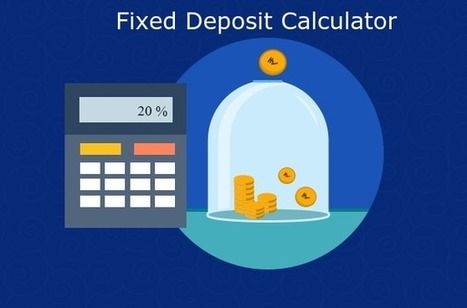Contents
Savings account as well as fixed deposits (FD) are interest-bearing accounts wherein you get your money back with interest. Opening a savings account is the conventional way to park your money until you can collect enough money for significant investments. The interest rates on a savings account are comparatively lower than other investment options.
To calculate interest rates on a savings account, you need the value of the amount deposited, the frequency of the interest calculated (daily, monthly, yearly), and the term of the interest calculation. Similarly, you need the deposit amount, tenor, interest rates, and frequency of the compounded interest to determine the maturity amount using the FD interest rates calculator.
How to Calculate Interest Rates on Savings Accounts?
The simple interest formula for calculating interest rates on a savings account is as follows:
I = P x r x t
where,
I = Interest Amount
P = Principal Amount
r = Rate of interest
t = Term of interest calculation
This formula is applicable if your banks state the interest rate as an Annual Percentage Yield (APY). In case your bank just displays interest rates, calculated on the daily or monthly basis, you will need a compound interest calculation.
The compound interest calculation for calculating interest rates on a savings account is as follows:
A = P (1+r/n) ^ nt
Where,
A = Accumulated Amount
P = Principal Amount
r = Rate of Interest
n = number of years
t = Term of Interest Rates
Compared to calculating interest rates based on a daily and monthly basis, interest rates calculated using APY is quick. You can get an idea of the exact money you will earn after some years with minimal calculations.
How to Calculate Interest Rates on Fixed Deposits?
The simple interest formula for calculating FD interest rates is as follows:
SI = P x r x t/100
Where,
SI = simple interest
P = principal amount
r = rate of interest
t = term
Simple interest is the process of earning a predefined interest rate on investment for a number of years. Compound interest is the process to earn interest on the interest rate as well as the principal amount.
The compound interest formula for calculating FD interest rates is as follows:
CI = P {(1 + i/100)n – 1}
Where,
CI = compound interest
P = principal amount
i = rate of interest
n = number of years
With the online application of FD, you do not need to calculate the returns and interest rates of your investment manually. You can browse for a credible online FD calculator like the ones provided by one of the prominent NBFCs (Non-Banking Financial Companies), Bajaj Finance. With the input of few basic details like personal details, the tenor of the FD, type of FD, deposit amount, and some necessary documents, you can determine the returns of your investment for better finance management.
How Does FD Calculator Work?
You can easily calculate the FD interest rates and returns using FD calculators offered by Bajaj Finance. All you ought to do is to follow the steps mentioned below:
- Mention the category of customer you belong. The categories are a new customer, existing, and senior citizen.
- Select the type of FD. There are two types, cumulative FDs and non-cumulative FDs.
- Choose the amount you want to deposit in the FD (the minimum deposit is Rs. 2500)
- Mark the preferred tenor ranging from 12 months to 60 months
The exact returns based on all the above factors will be displayed on the screen. You can manage your finances according to the returns and FD interest rates offered. Check the credibility of the financial institution you wish to invest. Since experts advise to prefer NBFCs, it is essential to confirm the reliability of the company. Bajaj finance is certified with ICRA’s MAAA and CRISIL’s FAAA rankings which is the top rank given to a financial company.


